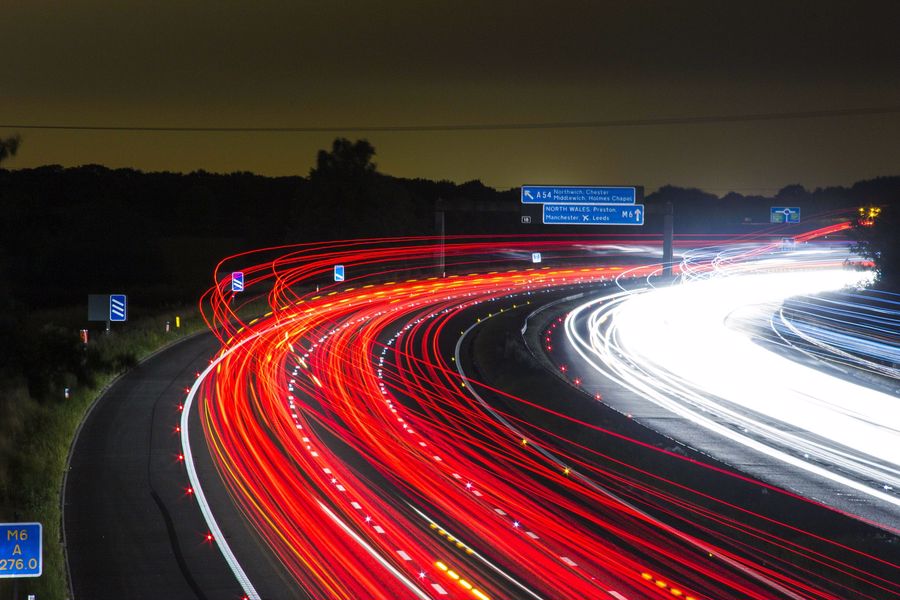
As an Amazon Associate we earn from qualifying purchases.
In
Sometimes, there are images where the subject looks almost unreal. For example, in some pictures, the water looks silky, or the taillight of a car has long red lines that are blurred and stretched.
You may think that these are effects added after the image was photographed, and they've been manipulated using a photo editor. However, that is not the case. These types of images are produced using an easy and popular camera technique, especially in real estate
Quick Navigation
Long exposure technology is a technique that uses slow shutter speeds to create unique and creative-looking imagery. It is often used by photographers who are into architecture, landscape, street, portrait, and real estate
By using slow shutter speeds and long exposures, it blurs moving objects like cars, water, and even clouds.
Long exposure starts when the shutter speed is slow enough to capture a sharp image. The exact shutter speed used will depend on the camera and focal length of the lens.

Long exposure photography is one of the most popular
The shutter speed is calculated via fractions of seconds. A large denominator is faster than a lower denominator, which means 1/1000 is faster than 1/10.
A slower shutter speed with a lower denominator, like 1/10, allows more natural light to come through the sensor.
The important equipment used for long exposure
Long exposure
The requirement, though, is that it should have manual functions so you can adjust the settings, especially the aperture, ISO, and shutter speed.
Tripods are important in the technique. This is because you will need to use slow shutter speeds that sometimes last seconds or even minutes.
You need to ensure that your DSLR camera is balanced the whole time while the shutter is open.
When you are using Bulb Mode on your device, a remote shutter release is very useful.
Although it is not essential when taking pictures with exposure times under 30 seconds, it is still recommended to use a remote shutter release for convenience.
When you look through the viewfinder after mounting a filter, you won't see much. The same thing applies to your camera. If you try to take an image immediately without proper adjustments, you will get a black photo.
You can use an app on your smartphone to do long exposure technology. There are a lot of free apps like the Long Exposure Calculator that calculates your camera's new shutter speed.
You just need to insert the original shutter speed of your camera. This is why it is vital to remember the shutter speed that you used during your test image.
Some of the apps come with a timer that can be used to track the time that the shutter is open.

You can depend on your smartphone apps. However, you can also benefit from learning how to calculate shutter speeds. It will allow you to have an idea on which shutter speed to follow based on the light around you.
So how is a shutter speed calculated? First, you need to check how dark the filter is.
If your filter is ND0.3 or 1 stop, that is equivalent to a 2x shutter speed.
If your filter is ND0.6 or 2 stops, that is equivalent to a 4x shutter speed.
If your filter is ND0.9 or 3 stops, that is equivalent to an 8x shutter speed.
If your filter is ND1.8 or 6 stops, that is equivalent to a 64x shutter speed.
If your filter is ND3.0 or 10 stops, that is equivalent to a 1000x shutter speed.
A 10 stop filter allows less light of about 1,000 light. That means that the exposure time is lengthened by 1,000 times to let the same amount of light reach your camera's sensor.
For long exposure photography, you will need at least 10 to 30 seconds of shutter speed to get your desired outcome. What you are really after is a slow shutter speed.
You will begin to get the long exposure look at half a second for fast-moving subjects. However, generally, you will need a shutter speed of 10 to 30 seconds, and for some pictures, you may need a longer time.
The 500 or 300 rule is regarding the time that the shutter speed is open before the image starts to get blurry. The 500 is divided by the camera lens' focal length.
Long exposure
With timing, practice, and correct calculation, you will be able to master long exposure
